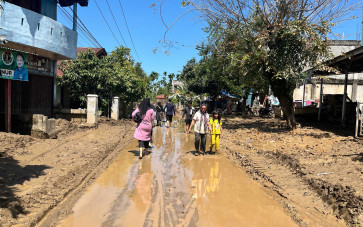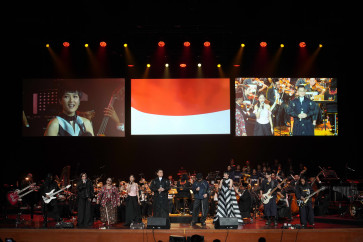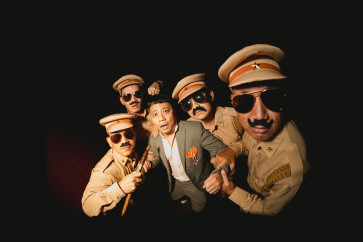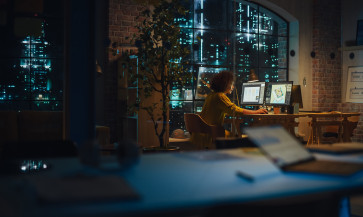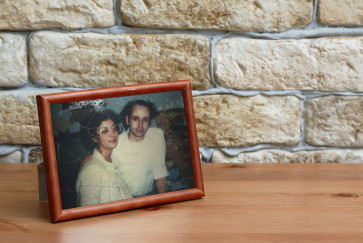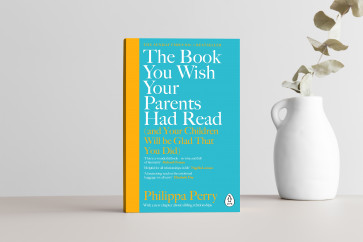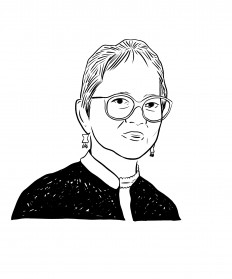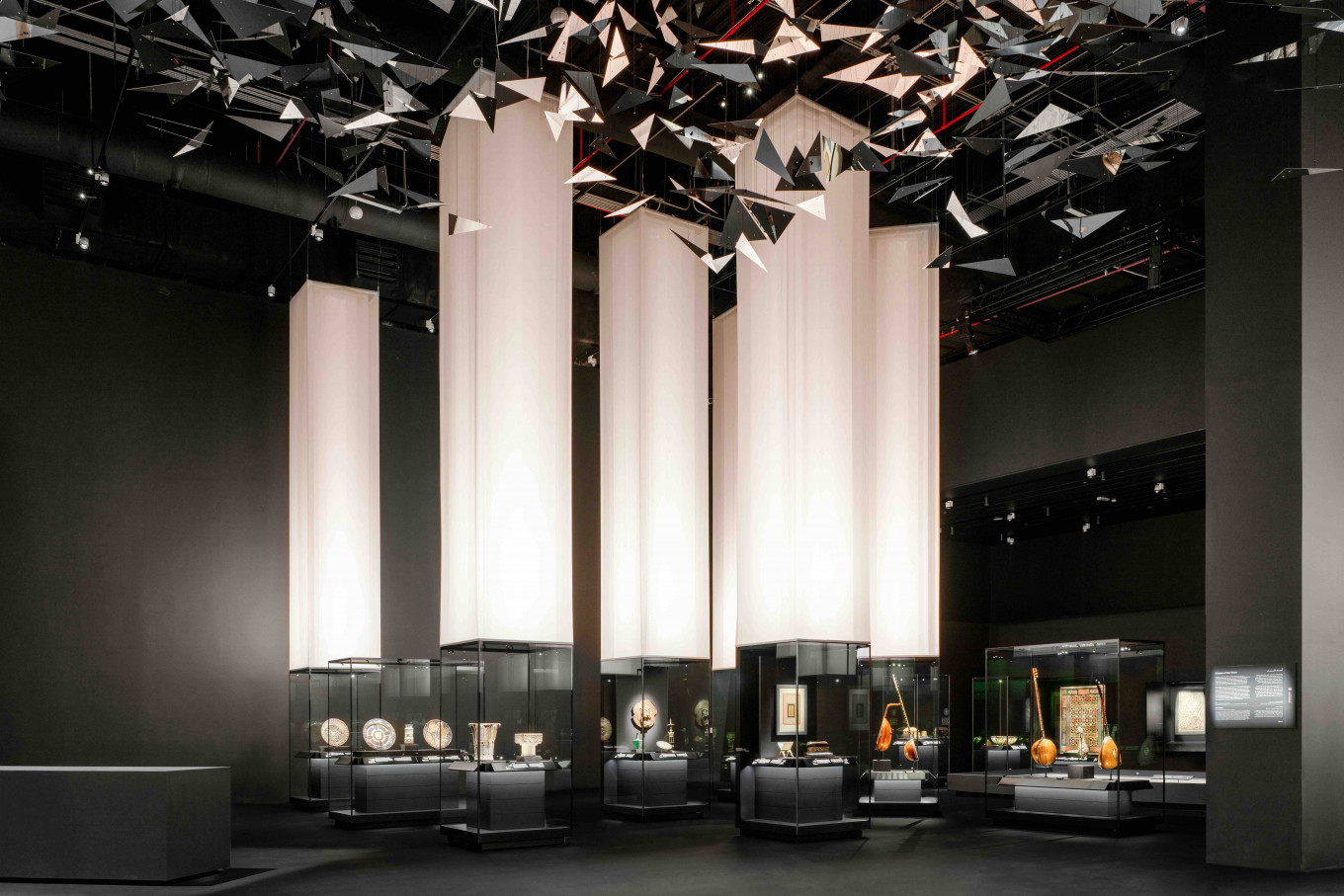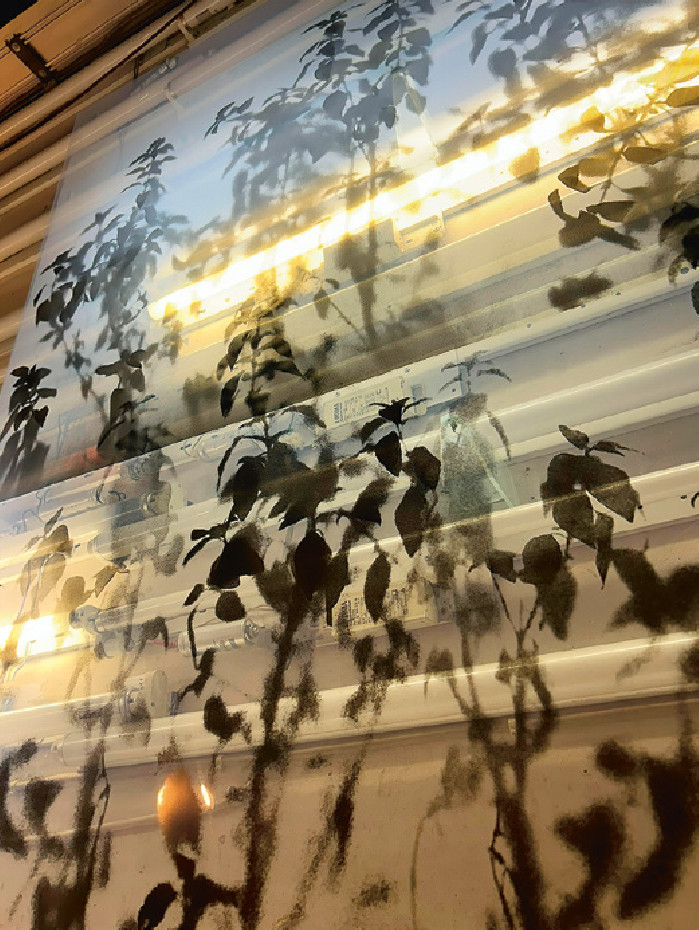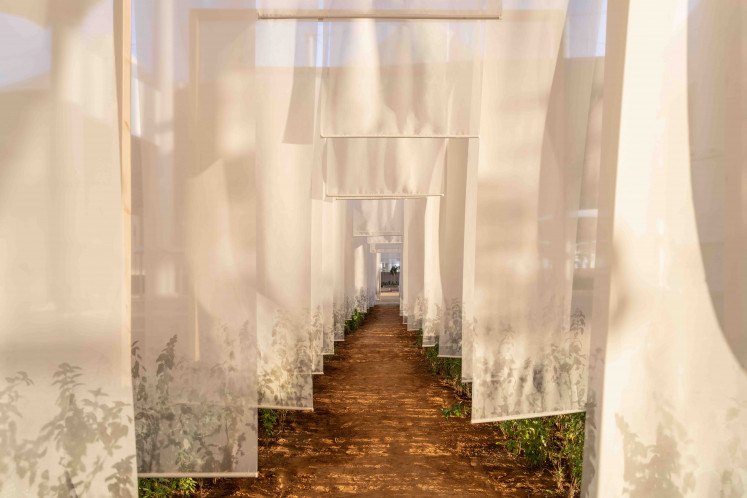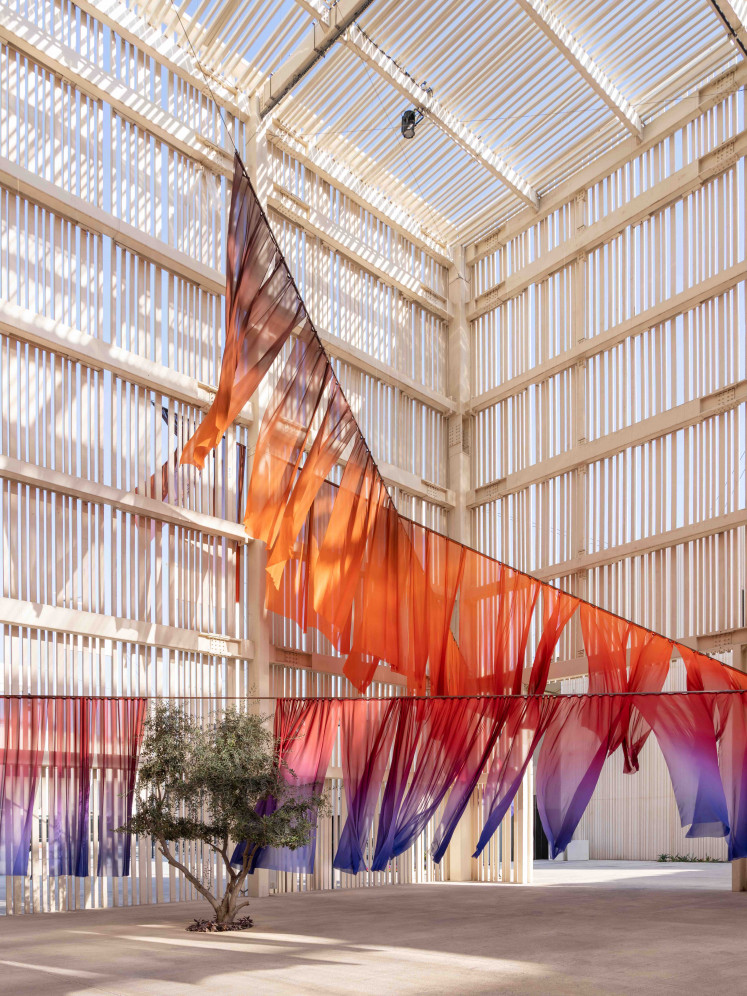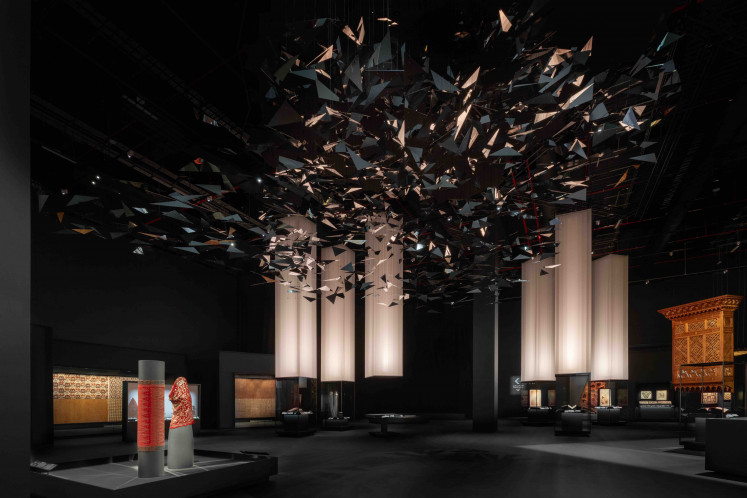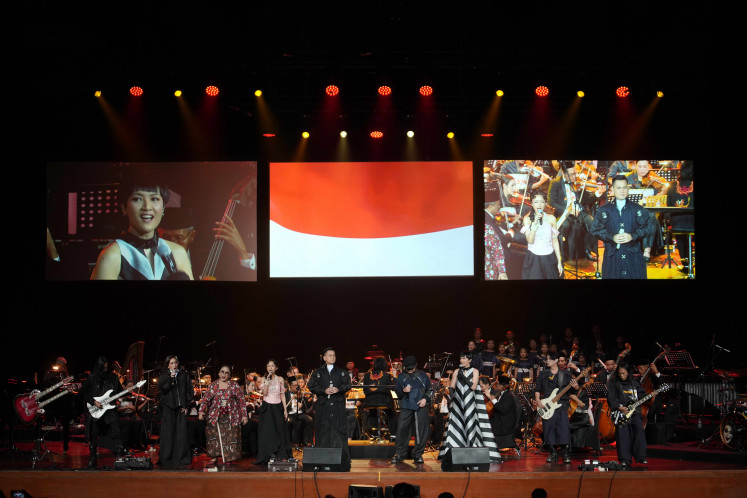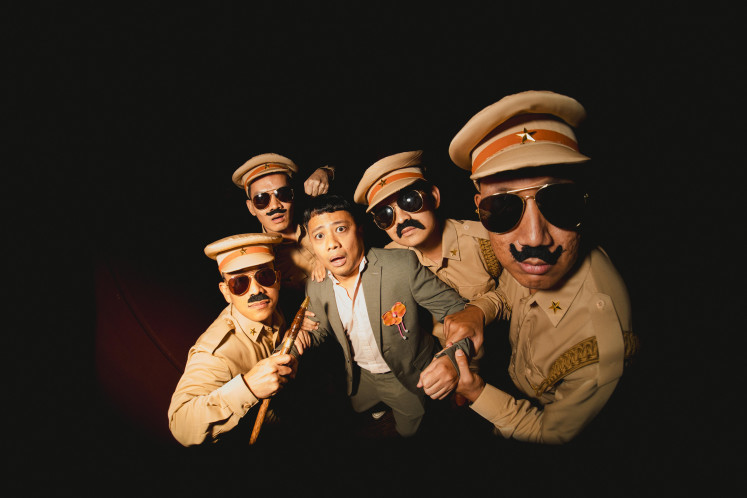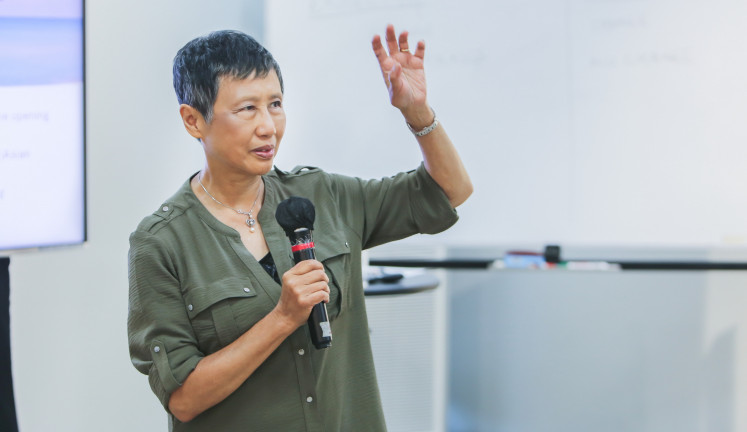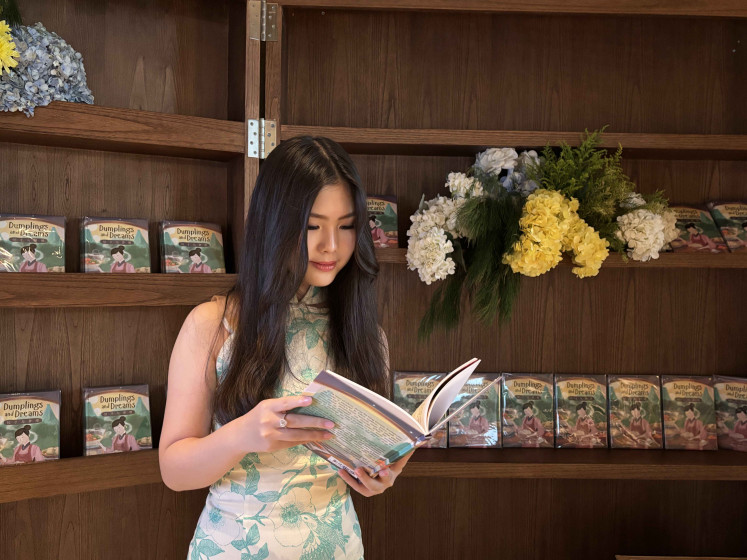Pilgrims arriving at Jeddah international airport in Saudi Arabia are now being welcomed by a unique exhibition experience.
Spanning a total area of 110,000 square meters, including 12,000 sq m of dedicated exhibition space, the Islamic Arts Biennale presents a compelling display of historical objects, the stories they carry and how they connect with the spirit of the present day.
Titled “And All That Is In Between”, this year’s biennale marks a new chapter in the evolution of Islamic art and culture, bridging tradition with contemporary expression.
The theme draws from the Quranic verse, “God created Heaven and Earth, and all that is in between”, urging faith to be experienced, expressed and celebrated through feeling, thinking and creating.
At its core, the Biennale reflects upon how Islamic culture continues to evolve with the times.
Running from Jan. 25 to May 25, and located in the Western Hajj Terminal at Jeddah’s King Abdulaziz International Airport, this monumental exhibition pairs 30 newly commissioned contemporary works with more than 500 priceless historical artifacts from around the world.
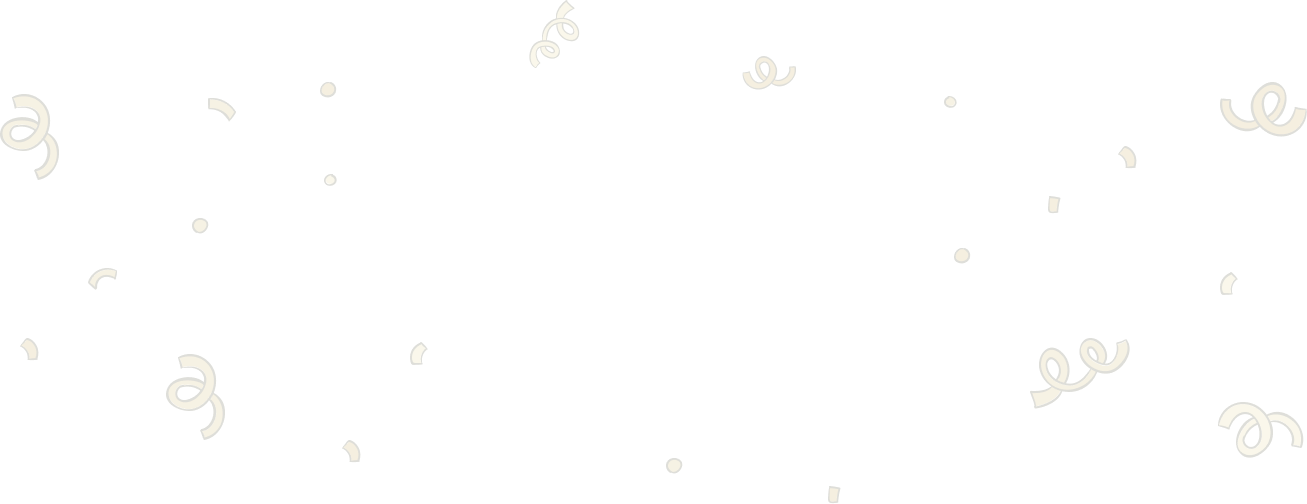
Thank you!
For signing up to our newsletter.
Please check your email for your newsletter subscription.
At a time of global unrest, the Biennale offers a refreshing new energy to Islamic cultural and artistic traditions, opening the door to contemporary creation and deeper artistic interpretations.
The curator’s vision
“There’s an urgency in being present, being engaged and giving shape to the in-between, while always keeping an eye on the future,” says Mohannad Shono, renowned Saudi contemporary artist and curator of the Biennale’s contemporary art commissions.
Shono’s own work explores themes of spirituality. As curator, he brings this sensibility to his selection of 30 artists, both Saudi and internationally acclaimed, whose works echo this spirit.
Significantly, half of these featured contemporary artists are women, a testament to the diversity and depth of perspectives on display.
Representing Indonesia, three major institutions are participating. The Sonobudoyo Museum in Yogyakarta is presenting wayang and batik in Islamic art, while the West Nusa Tenggara Museum and the National Library of Indonesia are contributing key national pieces.
Monumental and transcendental
One standout installation that encapsulates the Biennale’s spirit is Al Musalla, the winning architectural design selected specifically for this year’s event.
(Photos courtesy of Diriyah Biennale Foundation)
Situated amid the bustling paths of haj pilgrims, Al Musalla offers a quiet refuge for prayer, rest and reflection.
Developed by Lebanon’s EAST Architecture Studio in collaboration with AKT II and Lebanese artist Rayyan Tabet, the structure was designed with environmental and cultural sensitivity in mind.
Waste materials, like fronds and fibers from local date palm trees, were repurposed into sustainable building components. The walls and floors are lined with textiles made from local and regional plants.
Symbolically, the structure resembles a loom, connecting to the cultural heritage of textile weaving.
In a forward-thinking gesture, the musholla (prayer room) is open to both Muslims and non-Muslims throughout the Biennale.
Another centerpiece is the kiswa, one of the Biennale’s most significant historical artifacts.
The Kiswa at the Islamic Arts Biennale. (Courtesy of Diriyah Biennale Foundation)
This black cloth, usually draped over the Kaaba (the cubic sacred stone building in the Great Mosque of Mecca toward which all Muslims pray), is adorned with Quranic verses embroidered in gold and silver thread.
This marks the first time it has been publicly displayed, making this a rare and monumental moment.
Highlighted artists
With such a vast array of works, it is impossible to cover everything, but a few pieces stand out:
The details of Charwei Tsai's large-scale circular paintings. (Courtesy of Diriyah Biennale Foundation)
Charwei Tsai (b. 1980, Taiwan)
Inspired by a 10th-century ceramic dish from Samarkand, now in the Louvre’s collection, Tsai created two large-scale paintings featuring circular, repetitive script. Her works incorporate ink and mother-of-pearl pigment, enhancing the meditative rhythm of the form.
The kufi inscription reads: “Wisdom tastes bitter at first, then becomes sweeter than honey, [bringing] good health.”
Tsai hopes these words, drawn from the past, offer strength and comfort to pilgrims today.
Fatma Abdulhadi's I Wish You in Heaven combines silkscreen prints on mesh, basil-based ink, and a wooden structure. (Courtesy of Diriyah Biennale Foundation)
Fatma Abdulhadi (b. 1988, Saudi Arabia)
Known for her scent-based installations and silkscreen work, Abdulhadi draws on her family’s connection to the basil plant, a scent her mother associated with paradise and remembrance of the dead.
Her piece, I Wish You in Heaven, combines silkscreen prints on mesh, basil-based ink, and a wooden structure. As wind moves through the work, the scent of basil is released, evoking longing and spiritual reflection.
Rayya Kassisleh (b. 1992, Jordan)
Kassisleh’s sculptural installation, Heavy Petals, takes inspiration from her late grandmother’s floral motifs. Drawing from photo archives, the piece layers soft, falling roses in homage to memory, heritage, and home.
Media Fountain by Anhar Salem. (Courtesy of Diriyah Biennale Foundation/Photo by Marco Cappelletti)
Anhar Salem (b. 1993, Yemen)
Yemeni-Indonesian artist Anhar Salem pushes boundaries with Media Fountain, an interactive piece that challenges Islamic conventions on image-making. A simulated water tap projects AI-generated visuals, drawing from Islamic image archives, onto viewers’ hands.
Salem interrogates themes of digital appropriation, authenticity and religious identity in an age of mass image reproduction. Her work is a bold commentary on spiritual expression in the digital era.
Lucia Koch transforms light and space in Air Temperature. (Courtesy of Diriyah Biennale Foundation/Photo by Marco Cappelletti)
Lucia Koch (b. 1966, Brazil)
In Air Temperature, Koch transforms light and space with translucent textiles printed with color gradients. The hues shift subtly as time passes, creating an ever-changing experience that captures the ephemeral nature of light and presence.
Timo Nasseri's Echoes of the Skies is made from 1,008 polished stainless steel mirrors. (Courtesy of Diriyah Biennale Foundation/Photo by Marco Cappelletti)
Timo Nasseri (b. 1972, Germany)
Echoes of the Skies by Timo Nasseri imagines a flock of birds scattered across a suspended dome. Made from 1,008 polished stainless steel mirrors, the birds reflect their surroundings in fragmented motion, offering a poetic meditation on unity, fragmentation and flight.
Carla Bianpoen is a curator, journalist, writer and observer of contemporary art and culture.




